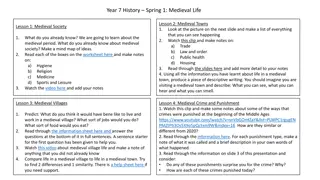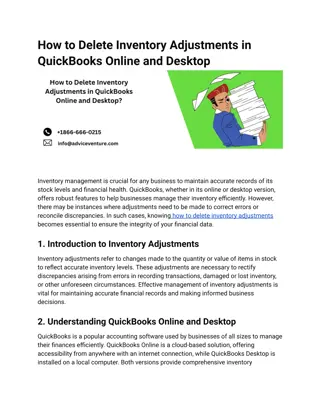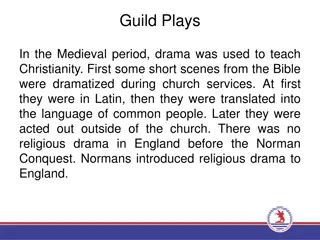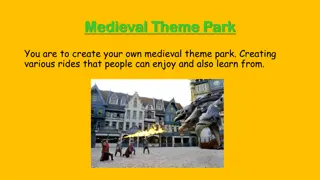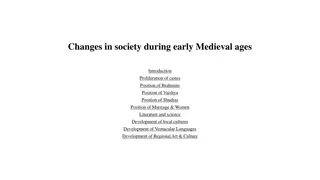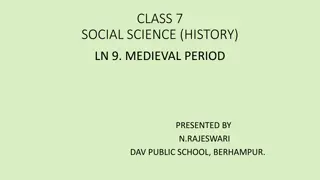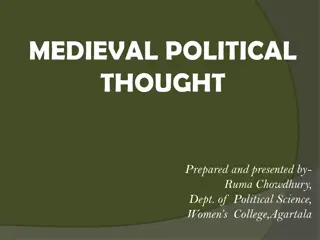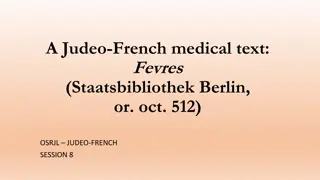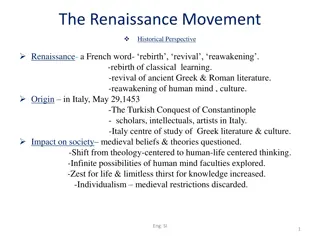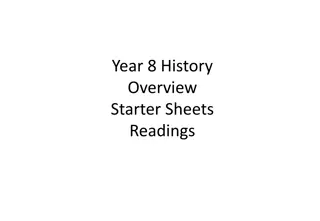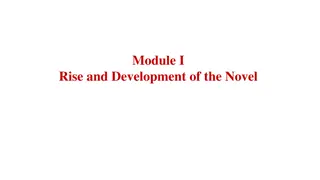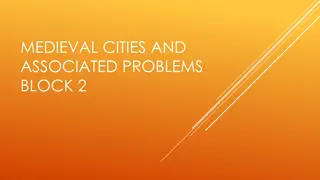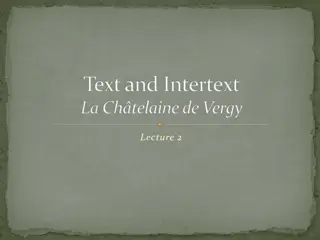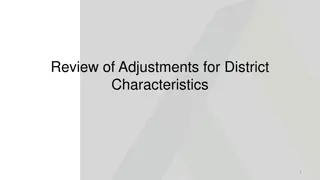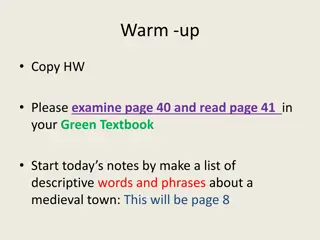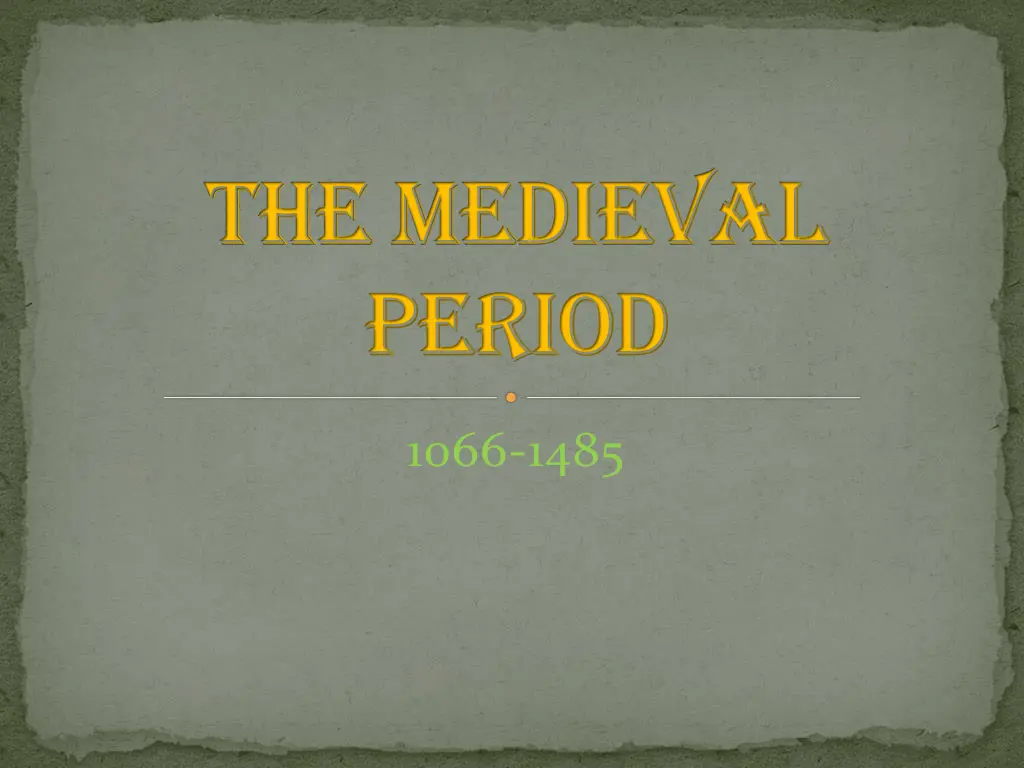
The Medieval Period: An Overview of Life and Society
Explore the Medieval Period (1066-1485) with insights into feudalism, knighthood, women's roles, and the influence of the French on English language development. Discover a time of organization, hierarchy, and chivalry, reflecting a society focused on order and structure.
Download Presentation

Please find below an Image/Link to download the presentation.
The content on the website is provided AS IS for your information and personal use only. It may not be sold, licensed, or shared on other websites without obtaining consent from the author. If you encounter any issues during the download, it is possible that the publisher has removed the file from their server.
You are allowed to download the files provided on this website for personal or commercial use, subject to the condition that they are used lawfully. All files are the property of their respective owners.
The content on the website is provided AS IS for your information and personal use only. It may not be sold, licensed, or shared on other websites without obtaining consent from the author.
E N D
Presentation Transcript
The Medieval Period 1066-1485
The Middle Ages At his most characteristic, medieval man was not a dreamer nor a wanderer. He was an organizer, a codifier, a builder of systems. He wanted a place for everything and everything in the right place. Distinction, definition, tabulation, were his delight. Though full of turbulent activities, he was equally full of the impulse to formalize by the art of hierarchy and the rules of chivalry; sexual passion, by the elaborate code of love There was nothing which medieval people liked better, or did better, than sorting out and tidying up. Of all our modern inventions I suspect they would have admired the index card.
October 1066 William of Normandy defeated King Harold of England, the last of the Anglo-Saxon Kings. So began the Norman Conquest William the Conqueror wanted to rule the Anglo- Saxons, not eliminate them.
Influence of the French The French, Anglo-Saxon, and Latin languages were combined to create our English language. Began an inventory of every piece of property and therefore could now tax what was owned. Domesday Book tax record book
Feudalism Was a caste system, a property system, and a military system. The king was the supreme ruler by divine right. He appointed barons, allotting them land, and in return, they promised him their economic and military allegiance. The system went all the way down to the serfs who could not own the land they tilled.
Knights Males above the serf class went into military service for their lord. Boys were trained from an early age to be warriors; when the training was completed, they were dubbed or knighted. Once knighted, they received the title sir and the full rights of the warrior caste. Knighthood was an idea of loyalty and entailed a complex system of codes.
Women Were always subservient to a man, whether to a father, brother, or husband. The status of the male decided the degree of respect she received. Peasant: childbearing, housework, and hard fieldwork Women of a High Standing: childbearing and supervision of housework; they might even manage the estate if the husband was away They had no rights.
Chivarlyand Courtly Love Chivalry was a system of ideals and social codes governing the behavior of knights and gentlewomen. Examples: loyalty to one s lord, observering certain rules of warfare never attacking an opponent who is unarmed Adoring a particular lady was seen as means of achieving self-improvement Revering and acting in the name of the lady would make a knight braver and better ; was a central aspect to courtly love
Courtly Love A non-sexual form of love A knight might fight wearing her colors Or glorify her in words And be inspired by her The lady always remained pure and out of reach Since this idea is fairly far-fetched, it has provided much drama for Arthurian and Medieval stories Medieval Romance stories of adventure, gallant love, chivalry, and heroism
The Monarchary After William the Conqueror Near anarchary Henry II Richard I Richard the Lion Hearted King John while Richard was away his brother, King John, plotted against him. Remember Robin Hood Resulted in the Magna Carta: limited royal authority by granting more power to the barons
Hundred Year's War Between England and France Began in 1337 during the reign of Edward III Continued on and on for more than a century Eventually the French defeated the English A new social class emerged: yeoman class, bringing with it modern democracy
The Black Plague: 1348-1349 Brought the end of feudalism because it caused a labor shortage, leading the serf s freedom Killed around 1/3 of England s population
War of the Roses At the end of the Hundred Year s War, two families claimed right to throne York: symbolized by a white rose Lancaster: symbolized by a red rose At the end of the war in 1485, Lancastrian Henry Tudor killed the Yorkist king Richard III and took the throne as Henry III This event marks the end of the Middle Ages or the Medieval Period


